- 02 9712 1736
- [email protected]
- 212 Great North Road, Five Dock, NSW 2046
- Open 6 days from 7am
Are you suffering from neck pain and stiffness? Joint arthritis might be to blame. In this post, we will discuss how arthritis can affect the joints in your neck, explore a few identifying signs and symptoms, and evaluate some strategies for management and prevention.
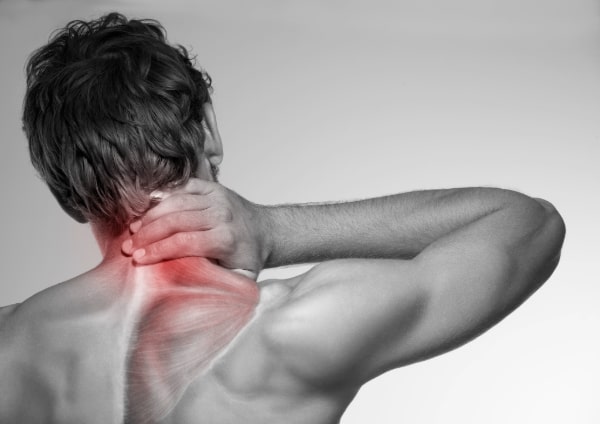
Arthritis is an umbrella term which encompasses multiple conditions that affect the joints. Conditions such as osteoarthritis, rheumatoid arthritis, psoriatic arthritis, and reactive arthritis all fall under the umbrella term arthritis. Arthritis in the neck affects the joints of your cervical spine. The cervical spine is a section of the spine which is positioned deep in your neck providing structure and the ability to hold your head upright. The different arthritides can presently differently and can have different levels of stiffness and pain involved. However, they all share a common feature – joint degeneration.
Osteoarthritis, also known as degenerative joint disease, or non-inflammatory arthritis, is the most common type of arthritis. It is associated with wear and tear that occurs with age. This condition is characterized by the gradual deterioration of joints in the cervical spine. Gradual loss of mobility and increasing stiffness in the joints eventually results in pain, chronic poor posture, and inability to perform daily tasks due to restricted mobility.
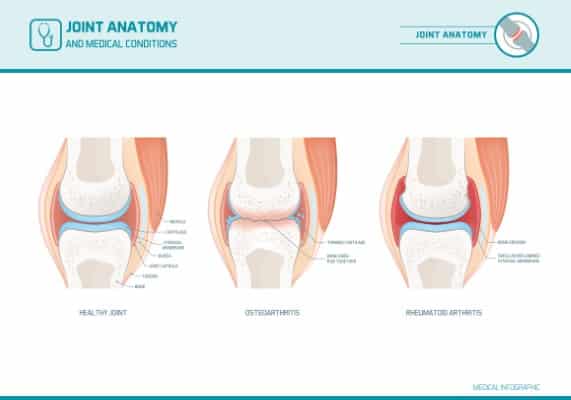

Rheumatoid arthritis, psoriatic arthritis, and reactive arthritis are types of inflammatory arthritis. In the case of inflammatory arthritis, the body’s immune system mistakes healthy tissues in the body as foreign and begins to target them. This results in inflammation in multiple joints in the body. As with autoimmune diseases, symptoms are not limited to only your joints and may affect other areas of your body too. Inflammatory arthritides have similar symptoms to osteoarthritis but will also be accompanied by redness and swelling in the affected joints.
To understand how arthritis can affect your neck, you need to first understand the normal anatomy of the neck. As mentioned in the previous section, arthritis in the neck affects the joints in the cervical spine. This is the section of your spine that forms your neck. The cervical spine is made up of 7 individual bones called spinal vertebrae that are stacked one on top of the other. These spinal vertebrae that form the cervical spine are named from C1, C2, C3, all the way to C7. C1 is the top-most spinal vertebra and is as such the closest to your skull. C7 is the bottom-most spinal vertebra and is responsible for the bump that you see at the back of your neck where it joins into your upper back.
Intervertebral discs sit between adjacent spinal vertebrae to act as shock absorbers. Individual spinal vertebra are connected to the spinal vertebrae above and below via facet joints that are positioned on the either side and towards the back of the spinal vertebra. Multiple ligaments that extend along the length of the spine exists on different sides of the spine to provide additional stability for the spine structure.
The spine has another role aside from structure. It also houses and protects the spinal cord and spinal nerves as it travels down from the brain into the rest of your body. As spinal vertebrae come together to form the spine, it needs to leave space for these nerve structures to pass through. The central foramen is a hole positioned roughly in the centre of the spinal vertebra and allows the spinal cord to pass through. Central foramen on multiple levels of spinal vertebrae form a tube called the central canal which houses the spinal cord. At each level, lateral foramen exists on either side between spinal vertebrae, a space to allow spinal nerves to pass through as it branches off the spinal cord.
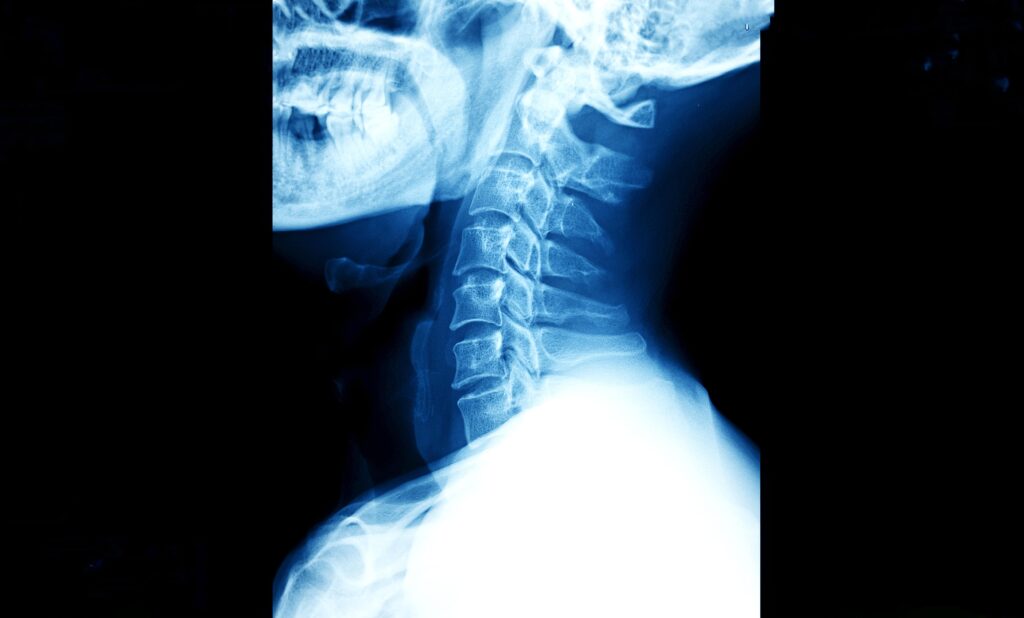
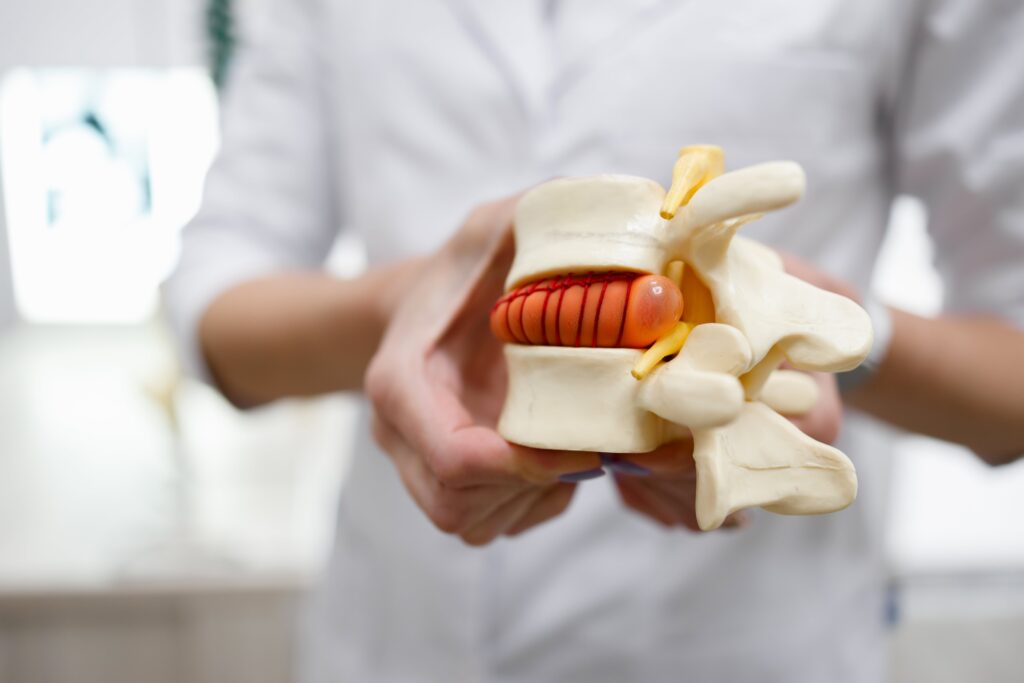
Let’s first take a look at osteoarthritis or degenerative joint disease. Structural changes occur in the cervical spine as part of a natural process as we age. These changes can lead to neck pain and stiffness. Cartilages in the facet joints wear down with with age, resulting in pain and stiffness as the space between the bone surfaces narrow. The intervertebral discs in the cervical spine, which act as shock absorbers, can also dry out and reduce in height, resulting in further increased stress in the facet joints and their cartilages. Thickening of ligaments results in reduction of mobility and increased stiffness. The increased stress on the joints as a result of these changes often then lead to development of bone spurs that can further exacerbate symptoms. You may begin to notice neurological symptoms such as tingling or numbness in the arms and hands if these structural changes also result in the compression of nerve structures.

In the case of inflammatory arthritis, similar structural changes can be observed in the joints of the cervical spine, but often as a result of inflammation rather than degeneration. As such, they are often preceded or accompanied by symptoms in other parts of the body that are specific to that condition. For example, psoriatic arthritis is associated with psoriasis, which is more commonly linked to the development of scaly, itchy rashes on your skin. Another example is reactive arthritis, which are secondary to an infection elsewhere in the body.
If you are experiencing any of symptoms of arthritis in the neck, it is important to consult with a healthcare professional for an accurate diagnosis and appropriate treatment.
Being able to recognise early signs and symptoms of arthritis in the neck, identifying the underlying cause, and seeking treatment sooner rather than later can be beneficial in the management of symptoms and prevention. One of the most common symptoms is persistent neck pain that may start gradually and worsen over time. This pain is often accompanied by morning stiffness, making it difficult to move the neck freely after waking up.
Other noticeable symptoms of neck arthritis include:

Noticing these early signs and seeking medical advice is vital to delay or stop further progression of the condition, thus preventing severe pain and discomfort.
Arthritis causes pain and stiffness in the neck primarily through the breakdown of cartilage in the joints. This breakdown leads to inflammation in the facet joints, which is a significant source of neck pain and limits movement. The deterioration of cartilage also results in crepitus, the clicking or grating noises and sensations that occur due to irregularities in the joint surface. These factors collectively contribute to the persistent neck pain and stiffness experienced by individuals with neck arthritis.
Bone spurs and spinal stenosis are additional complications of neck arthritis that can exacerbate pain and discomfort. Bone spurs, or osteophytes, develop due to the degeneration of facet joints and the subsequent reduce in joint space between spinal vertebrae. Spinal stenosis is a condition characterized by the narrowing of the spinal canal, often resulting from the presence of disc bulges and bone spurs.

Bone spurs in the neck develop as a result of arthritis-related degeneration and can contribute to significant neck pain. Bone spurs are bony projections, also known as osteophytes, that form in response to the reduced cushioning between vertebrae and increased friction within the joints. The body increases bone formation along the edges of your bones to try and minimise movement and therefore friction within the joints.
The development of bones spurs can however lead to narrowing of the spinal canal resulting in spinal stenosis, and narrowing of the lateral foramen resulting in foraminal stenosis. Subsequent compression of the spinal cord or spinal nerve roots results in neurological symptoms such as muscle weakness or numbness in the arms or hands.
If you are experiencing neck pain or any of these symptoms, it is important to consult with a healthcare professional for an accurate diagnosis and appropriate treatment.
Spinal stenosis can cause severe pain and stiffness by impinging on the spinal canal space and potentially compressing the spinal cord or nerve roots. This compression can lead to chronic neck pain and other symptoms that significantly impact daily activities and quality of life. Effectively managing neck arthritis requires addressing these issues through suitable treatments.
Initial conservative treatments often include a combination of physical therapy and nonsteroidal anti-inflammatory drugs (NSAIDs) like ibuprofen and paracetamol to manage pain while improving mobility and posture. If over the counter NSAIDs are not effective enough to manage pain and daily tasks are difficult to perform, steroid-based injections may be necessary.
Consultation with a healthcare professional before taking NSAIDs is crucial, particularly if there’s a risk of interaction with other medications or existing health conditions. Physical therapy techniques and home remedies can also play a significant role in managing neck arthritis symptoms and improving overall quality of life.
For severe cases of neck arthritis that do not respond to conservative treatments, advanced treatments may be necessary. Steroid injections into the affected area can provide short-term pain relief and reduce inflammation, especially when the pain radiates down the arm due to a pinched nerve. Surgery may be required to decompress the spinal cord or free up nerve roots from bone spurs in severe cases, with options ranging from traditional methods to minimally invasive techniques.
Spinal fusion, which involves fusing several segments of the spine together, can help stabilize the spine and alleviate problems caused by neck arthritis. Consultation with a healthcare professional to explore optimal treatment options, tailored to individual needs and medical history, is important.
Advanced treatments can offer significant relief for those who suffer from severe neck arthritis pain and stiffness.
Physical therapy is often the first non-surgical treatment recommended for neck arthritis and can offer substantial benefits. Specific exercises designed to strengthen weak neck muscles and enhance flexibility can significantly reduce neck pain and improve range of motion. Obtaining an individualised tailored physical therapy program can result in increased flexibility of your neck and improved posture, both of which are vital in effectively managing neck arthritis.
Physical therapy sessions are typically spread over a 6 to 8-week period and necessitates adherence to exercises to achieve the best results. It may take the entire 6 to 8-week period for individuals with neck arthritis to experience significant improvements in their symptoms and overall mobility.
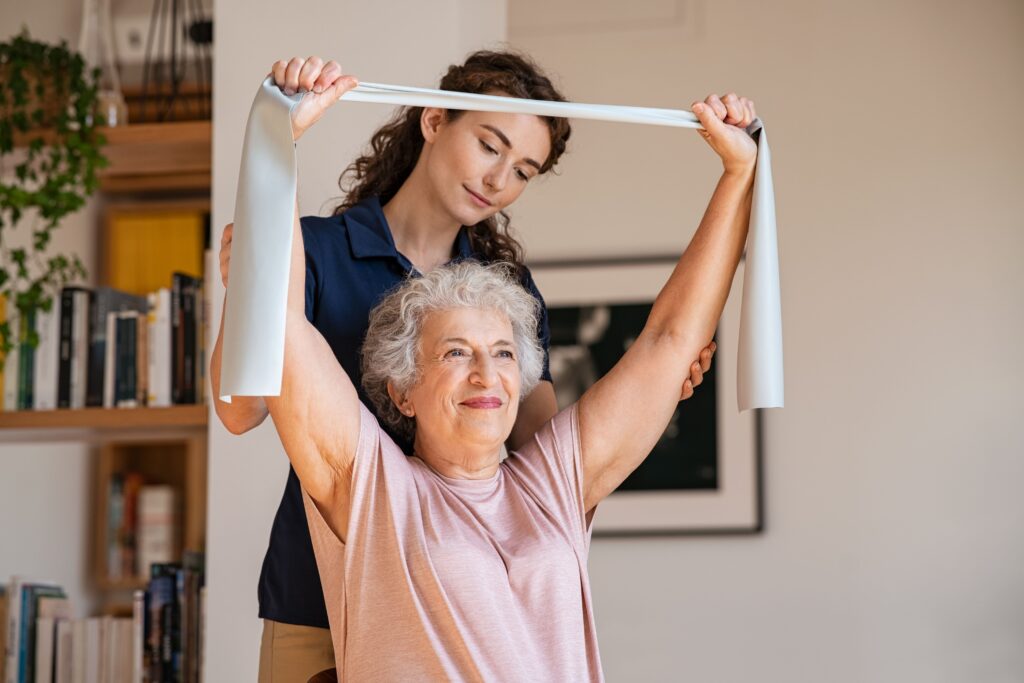
In addition to professional treatments, lifestyle adjustments can greatly help in managing neck arthritis symptoms. Choosing the correct pillow based on sleeping position can provide necessary neck support during sleep and help ease neck pain. Back sleepers may need a firmer pillow, while side sleepers can benefit from a medium one. Maintaining good posture is also critical to improving the effectiveness of neck arthritis treatments and mitigating neck pain.
Using proper chair support when working at a desk for long periods and ensuring back and neck support while using a computer are essential steps. The application of heat packs can relieve pain from muscle spasms in the neck associated with arthritis. Massage are recommended to help alleviate symptoms of neck arthritis.
R

Neck arthritis is a complex and often debilitating condition that affects many aspects of daily life. From the early signs of persistent neck pain and stiffness to the advanced symptoms caused by nerve root and spinal cord compression, understanding the full scope of this condition is crucial for effective management. Various treatment options, including physical therapy, medications, and lifestyle adjustments, can significantly alleviate symptoms and improve quality of life. For severe cases, advanced treatments such as steroid injections and surgery may be necessary to provide relief and restore function.
By recognizing the symptoms early and seeking appropriate medical advice, individuals with neck arthritis can take proactive steps to manage their condition. Whether through conservative treatments or advanced interventions, the goal remains the same: to reduce pain, improve mobility, and enhance overall well-being. Embracing a comprehensive approach to treatment and management can make a significant difference in living with neck arthritis.
If you experience persistent neck pain, morning stiffness, and reduced range of motion, it could be early signs of neck arthritis. It’s important to seek medical advice promptly to address the symptoms.
Arthritis causes neck pain and stiffness by breaking down cartilage in the joints, leading to inflammation and irregularities in the joint surface. This results in pain, limited movement, and clicking and grating sensations in the neck.
Choose the correct pillow for sleeping, maintain good posture, use proper chair support, and apply heat or cold packs to relieve muscle spasms for managing neck arthritis pain. Local therapies like ice, heat, and massage can also help alleviate symptoms.
Surgery for neck arthritis should be considered when conservative treatments fail or when there is significant nerve compression, as severe symptoms such as myelopathy may require surgical intervention to relieve pain and improve function.
Physical therapy can help with neck arthritis by strengthening weak neck muscles and enhancing flexibility, which can significantly reduce pain and stiffness and improve overall mobility.
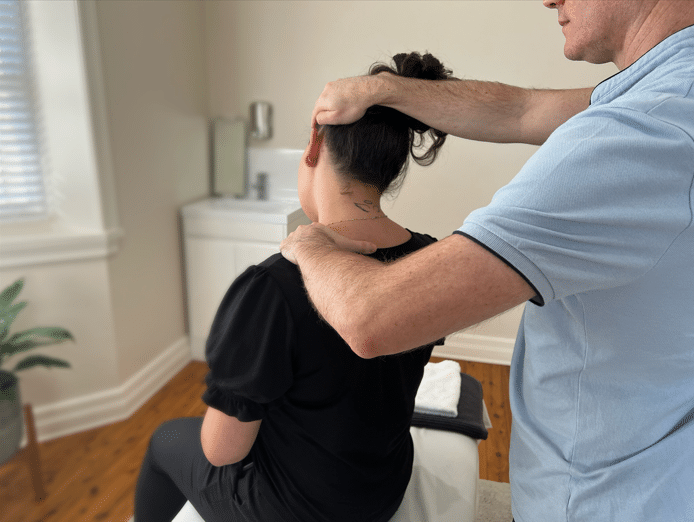
212 Great North Road, Five Dock, NSW 2046
Onsite parking available
Phone: 02 9712 1736
Email: [email protected]
Mondays, Tuesdays, Thursdays 7AM – 7PM
Wednesdays, Fridays 7AM – 5PM
Saturdays 7AM – 2PM
Sundays CLOSED
Forest Lodge, Annandale, Glebe, Leichhardt, Balmain, Haberfield, Canada Bay, Rozelle, Rodd Point, Wareemba, Stanmore, Petersham, Lilyfield, Hunters Hill, Enfield, Cabarita, Mortlake, Rhodes, Burwood Heights, Birchgrove, Gladesville, Huntleys Point, Abbotsford, Ashfield, Croydon Park, Croydon, Chiswick, Russell Lea, Burwood, Strathfield, Concord, Drummoyne, North Strathfield, Liberty Grove, Dulwich Hill, Lewisham, Camperdown, Ashbury, Homebush, Homebush West, Woolwich, Henley, Summer Hill, Sydney Olympic Park

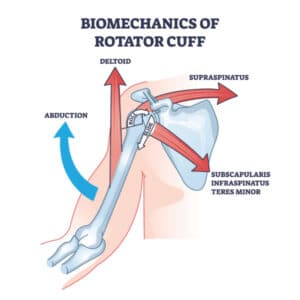
About
Five Dock Osteopathic & Chiropractic is located in Canada Bay, in Sydney’s Inner West. Servicing suburbs including Burwood, Croydon, Drummoyne, Five Dock, Haberfield, Concord, Abbotsford, Chiswick, Leichhardt, Wareemba, Russell Lea, Summer Hill, Strathfield.
Clinic hours
Monday, Tuesday, Thursday 7AM – 7PM
Wednesday, Friday 7AM – 5PM
Saturday 7AM – 2PM
Sunday Closed
Contact details